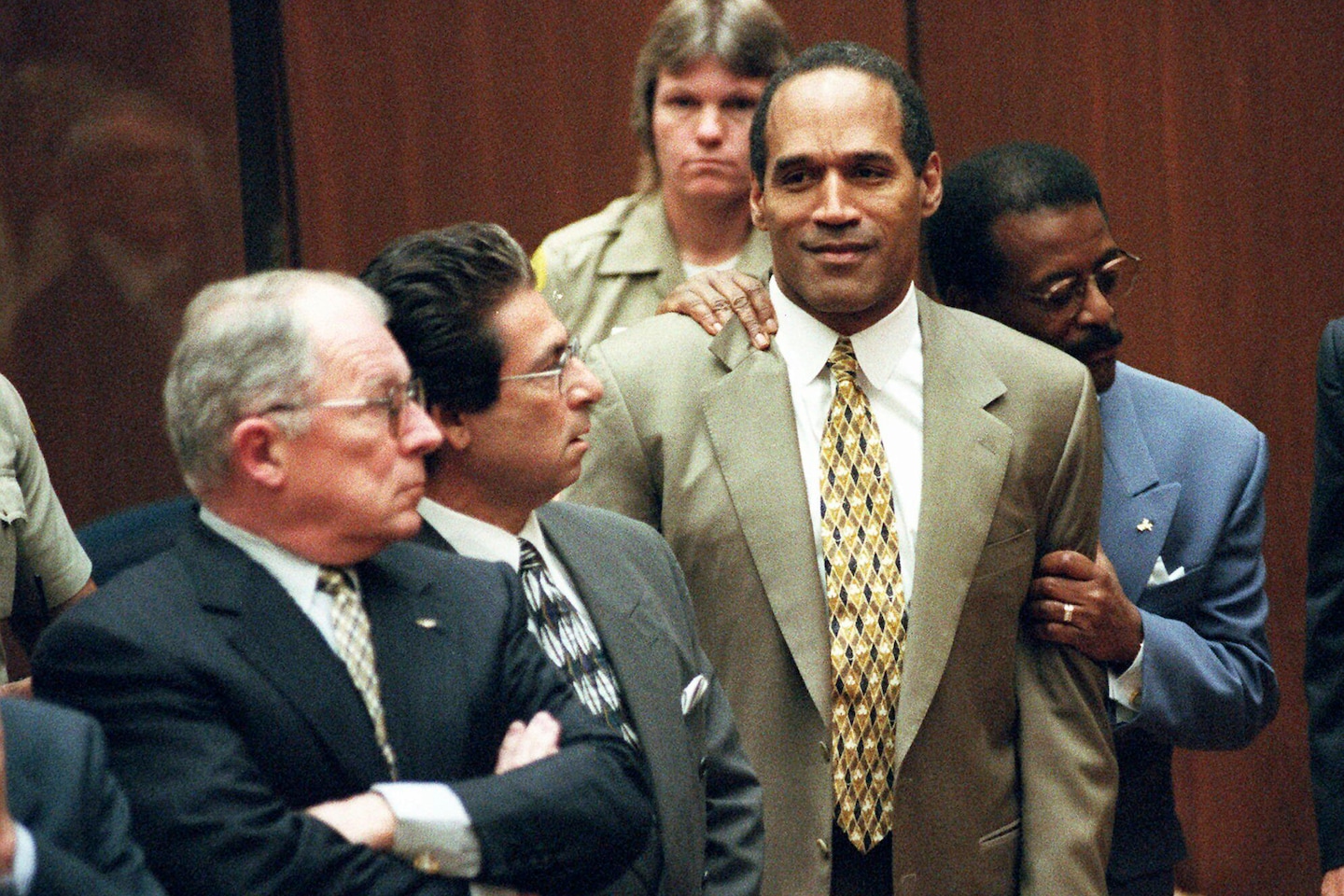What OJ Simpson and his murder trial told us about race in America

The nation’s view of his 1995 acquittal for the murders of his ex-wife, Nicole Brown Simpson, and a friend, Ronald Goldman, is largely divided along racial lines, although time has bridged some of the ditch. Simpson died on April 10 at age 76.
Just a few years after the acquittal of four police officers who beat black motorist Rodney King in 1992 and the 1991 murder of black teenager Latasha Harlins by a store clerk in Los Angeles, Simpson’s treatment by police and the media was seen by many actors in the black sector. community as proof that even wealthy celebrities can’t escape racism in America, said Amilcar Shabazz, a professor of African American studies at the University of Massachusetts at Amherst.
“When the verdict came down, we had white people on one side of the screen discouraged and crying, and then on the other side of the screen we had black people jumping up and down for joy,” Shabazz said.
These racial divisions remain, he said. “It’s because we haven’t repaired the social fabric like we like to claim we have because we fall back on race and racism at the drop of a hat or drop of the gauntlet in this case,” Shabazz said.
Although the reaction to the verdict was largely portrayed in the media at the time along racial lines, it was always more complicated than that, said James Lance Taylor, a politics professor at the University of San Francisco. “The truth is that millions of black people thought OJ Simpson was probably guilty,” Taylor said. “There was so much about the OJ case that related to the black experience in America.”
Twenty years after the verdict, a 2015 Washington Post-ABC News poll showed that black Americans were less likely to believe Simpson was guilty than white Americans, although by 2007 the gap had begun to narrow. In 1997, 31 percent of black Americans said they were “definitely” or “probably” sure of Simpson’s guilt. By 2015, this share had increased to 57 percent. By comparison, 83% of white Americans found Simpson guilty in 2015, about the same proportion as in 1997.
It’s not that black people have changed their minds about Simpson’s innocence, Taylor said. “I think in barbershops today, black people say, ‘He got away with it, but the police got away with killing a lot more of us,’” Taylor said. “That’s the mentality.”
Taylor was living in Los Angeles at the time of the killings and said he remembered the day Simpson led police on a car chase and how tens of thousands of people, many of them white, lined up in the streets and highways shouting, “Come on, OJ. , Go.”
But long before the trial, many black Americans already felt that Simpson had turned his back on the black community, Taylor said, noting that he would have liked to tell his friends: “I’m not black, I’m O.J. “.
Local police were preparing for riots if Simpson was convicted, Taylor said. “But black people didn’t like OJ like that. It wasn’t about OJ the person,” he said. “OJ was just an extension of the general polarization between Black America and law enforcement.”
“Sympathy for OJ is not as deep as we think” in the black community, Taylor said.
Kevin B. Blackistone, an ESPN panelist and professor of practice at the University of Maryland’s Philip Merrill College of Journalism, wrote in a 2016 Washington Post column: “Simpson did not transcend his race; he escaped as if he were a potential tackler. He came from the poor, black part of town, but his athleticism outweighed that and landed him at an exclusive white college in Los Angeles.
The Rev. Amos Brown of San Francisco’s Third Baptist Church, a longtime friend of Eunice Simpson, Simpson’s mother, said it was difficult for him to disentangle the football star’s crimes from the challenges he faced. faced, including the ever-present threat of violence in his neighborhood. up. “OJ Simpson and far too many young black men to date have been confronted with attitudes and practices that define them as less than human,” he said.
Simpson was introduced to a new audience in 2016 when two television series about the former running back captivated a generation too young to have known him as a Heisman Trophy winner and one of the country’s most recognizable figures.
Phillip Lamarr Cunningham, assistant professor of media studies at Wake Forest University, said many of his students view Simpson as a real crime figure rather than the athlete he remembers.
Cunningham, who was a young man during the trial, said he still struggled to get the not guilty verdict. “Like everyone else, I had to wrestle with the reality that he very well may have done it, alongside the fact that he is this black man who had, for all intents and purposes, been successful,” Cunningham said.
Los Angeles was a “tinderbox” at the time of Simpson’s trial, still reeling from Rodney King’s acquittal and other racially divisive cases, said Marc Watts, who covered the Simpson trial for CNN and is currently brand director for African-American film. Leaders Forum.
“Many African Americans thought OJ Simpson was the verdict of vengeance,” Watts said. “It was one that black people gained in response to some of the ones black people lost.”
For many blacks, the trial relied on the testimony of investigating detective Mark Fuhrman, who denied using racist profanities on the witness stand, Watts said. Simpson’s defense team produced audiotapes of Fuhrman using the word multiple times and Fuhrman later pleaded no contest to committing perjury during the trial. He could not immediately be reached for comment.
“That was the day I felt the jury, made up of a majority of African-Americans, had largely accepted the dream team’s idea that Fuhrman was a racist, thug white cop,” he said. Watts said.
Watts says he will never forget the day of the verdict, Oct. 3, 1995, when he stood on stands outside the Los Angeles courthouse and heard the roar of the crowd gathered outside with the media. When he returned home that evening, he watched news footage showing joyful black Americans and frustrated white Americans reacting to the verdict.
“It showed us even then that our country was tragically racially polarized. And that’s still true today,” Watts said.
washingtonpost





